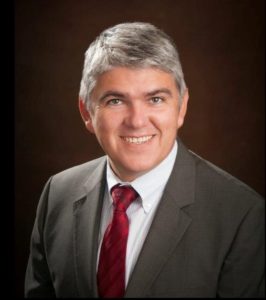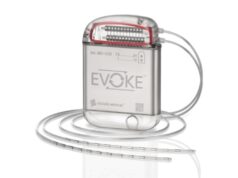
Continuous differential-target multiplexed (DTM) spinal cord stimulation (SCS) provides better thermal and mechanically induced pain relief compared to high-rate and low-rate SCS, concluded Ricardo Vallejo (Millennium Pain Center, Bloomington, USA), lead author and winner of the best basic science abstract presented at the North American Neuromodulation Society annual meeting (NANS; 17–20 January, Las Vegas, USA). Congruent with these results, Michael Fishman (Center for Interventional Pain and Spine, Exton, USA) later presented data confirming better results with DTM-SCS in a difficult-to-treat population of patients with intractable low back pain.
“We had a difficult patient population; they were older than landmark studies; they had a significantly longer duration of chronic back pain, and we have targeted the holy grail”, said Fishman. Addressing the NANS audience, he highlighted that the back pain responder rate for DTM-SCS was 80%, yet only 50% for conventional SCS, while the leg pain responder rate was 100% for DTM-SCS and 40% for conventional SCS. Referring to the conventional SCS outcomes, he said “they were surprising to me, I thought they [the responder rates] would be higher”, as he postulated that, “maybe we have been overlooking certain interactions and biological processes [..]; maybe we need to start looking at pain as a process rather than as a paraesthesia”.
The rationale behind the differential-target multiplexed approach to SCS was first bought to light by Vallejo and colleagues research on the measurement of glia-to-neuron ratio in spinal cords at vertebral levels relevant to SCS. According to the authors, the study provided anatomical support on the effects of electrical stimulation on neuroglia interaction, while the glia to neuron ratio was reported to be 92% to 8% in examined segments. This conclusion paved the way for a pre-clinical comparison of DTM-SCS with low- and high-rate SCS, as Vallejo surmised: “It is plausible to enhance the neuro-glial interaction and provide pain relief with SCS using a DTM approach”.
Speaking to the NANS audience as to whether SCS should be optimised for glial cells, Fishman stated: “We think so.” He acknowledged that in the T8–T11, glial cells outnumber neurons 12:1, meaning that most of the stimulation applied to the cord is actually being applied to glial cells. “Glial cells also respond to electrical pulses but they do so more differently than neurone cells do”, explained Fishman. Providing context to the terminology, he said “differential targeting” refers to multiple cell types being targeted, and “multiplexed” means that multiple signals are combined with the delivered stimulation.
The preclinical comparison of SCS approaches was carried out by inducing the spared nerve injury (SNI) neuropathic pain model in rats (n=10–13 per group). According to Vallejo, through implanting the rats with a quadrupole cylindrical lead, DTM-SCS, low- or high-rate SCS was applied continuously for 48 hours using an external neurostimulator. While DTM-SCS used multiplexed signals between 20 and 1,200 Hz (below 200µs, pulse width), low-rate used signals at 50Hz (150µs) and high-rate at 1,200 (50µs). Intensity was set to 70% of the motor threshold and pain behaviour—both mechanical and thermal hypersensitivity—was tested before SNI, as well as before and after SCS.
Vallejo reported that DTM-SCS relieved mechanical hypersensitivity significantly better than high-rate SCS and low-rate SCS (60.7±8.4% vs. 34.9±5.5% and 35.0±6.0%). Accordingly, this technique also relieved hypersensitivity to thermal stimuli, whereas neither high-rate or low-rate SCS reduced it significantly.
Interestingly, Vallejo said that further analyses conveyed that the spared nerve injury “significantly modulates genes involved in the immune and inflammatory processes […], highlighting the role of glial cells”. In light of the better outcomes for this novel technique, he proposed: “DTM-SCS modulated significantly more biological processes associated with the neuro-glia interactions such as regulation of cell communication, regulation of signal transduction, trans-synaptic signalling, regulation of protein phosphorylation, and regulation of ion transport than what high-rate SCS and low-rate SCS modulated”.
Reiterating the importance of studying these modulatory processes, Fishman and colleagues hypothesised that multiplexing electric signals—with signals differentially targeting glia (astrocytes, microglia, oligodendrocytes) and neurones—may produce a beneficial impact in relieving chronic pain.
Fishman and his team carried out a prospective, multicentre, open-label, crossover study in order to compare the pain relief from DTM-SCS with conventional SCS. An investigations device was used for DTM-SCS, programmed by the sponsor’s (Stimgenics) representatives to ensure that multiplexed signals were maintained between 20 and 1,200Hz, and under 1ms.
In total, 25 subjects with chronic intractable back pain were enrolled (mean age: 64.2; 60% male). The mean duration of chronic pain in this sample was 18 years, while the mean baseline back pain numerical rating score (NRS) was 7.
Fishman reported that in terms of conventional SCS outcomes, the mean back pain NRS had reduced to 4.1, while DTM-SCS achieved a score of 2.4; a difference of 1.7 points between the two therapies (p<0.0001). Back pain responder rates for DTM-SCS was 80% and 50% for conventional SCS. For chronic leg pain, conventional SCS elicited a mean leg pain NRS of 3.7, while DTM-SCS achieved 1.4; equating to a difference of 2.3 points (p=0.0003). Leg pain responder rates for DTM-SCS was 100%, indicating a statistically significant improvement over conventional SCS which achieved 40%. Furthermore, Fishman highlighted that 85% of the subjects preferred DTM-SCS.
In light of these findings, Fishman and colleagues were able to conclude that DTM-SCS can achieve significantly greater back pain relief and back pain responder rate when compared with conventional SCS. Moving forward with these results, Fishman put forward that “a larger, longer-term randomised clinical study is needed to confirm the potential advantages of DTM-SCS for chronic back pain”. However, in relating to these positive outcomes, Fishman said that is “makes us very excited to present to you—hopefully—the results of an RCT next year. We are actively enrolling plenty of patients.”









